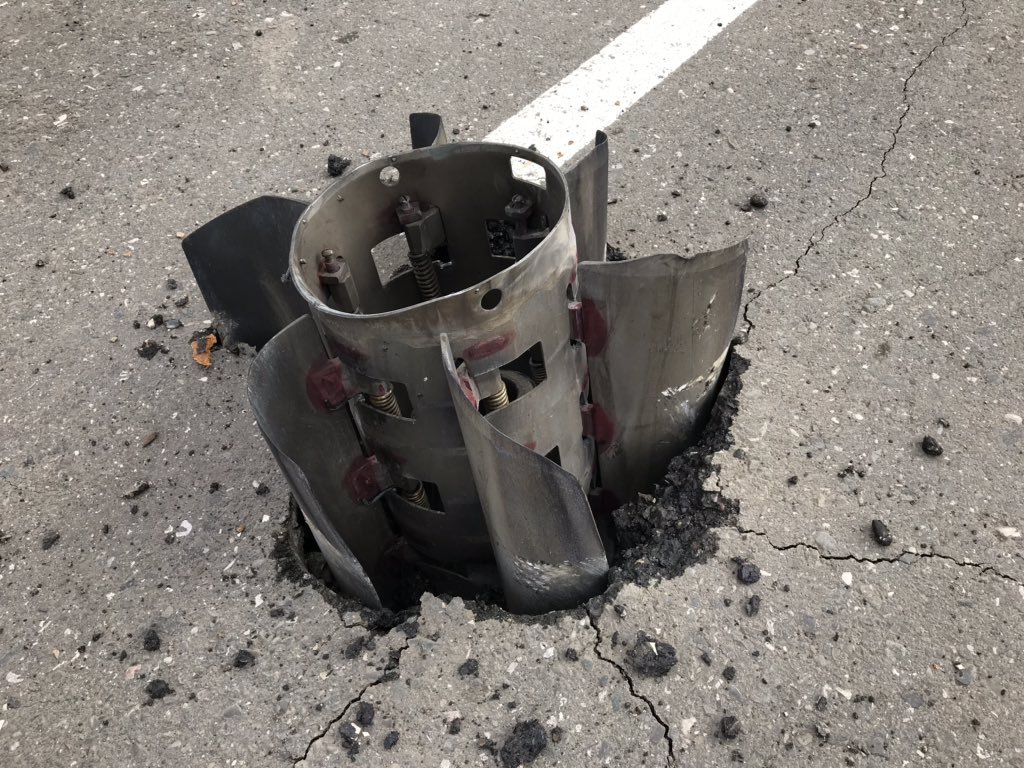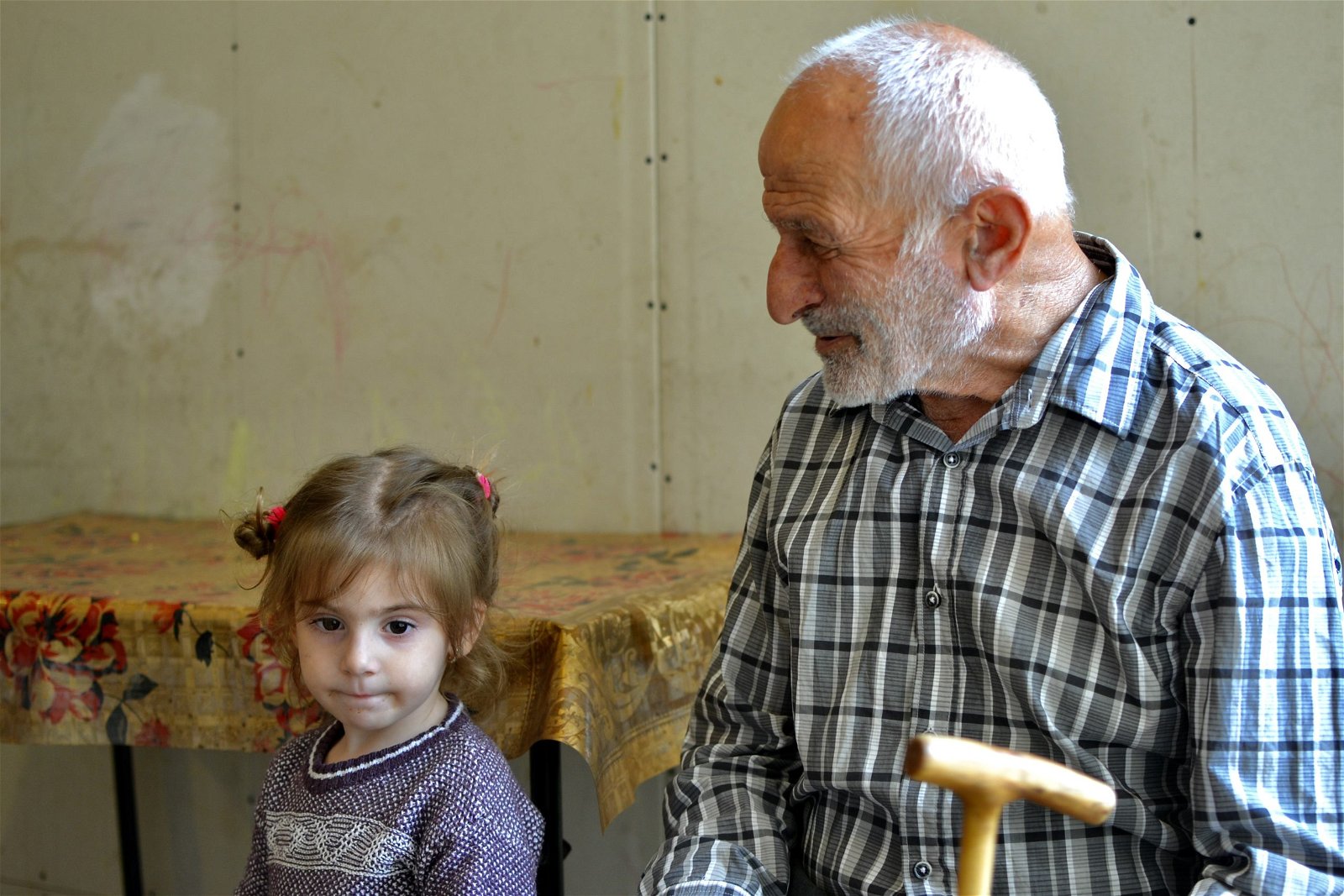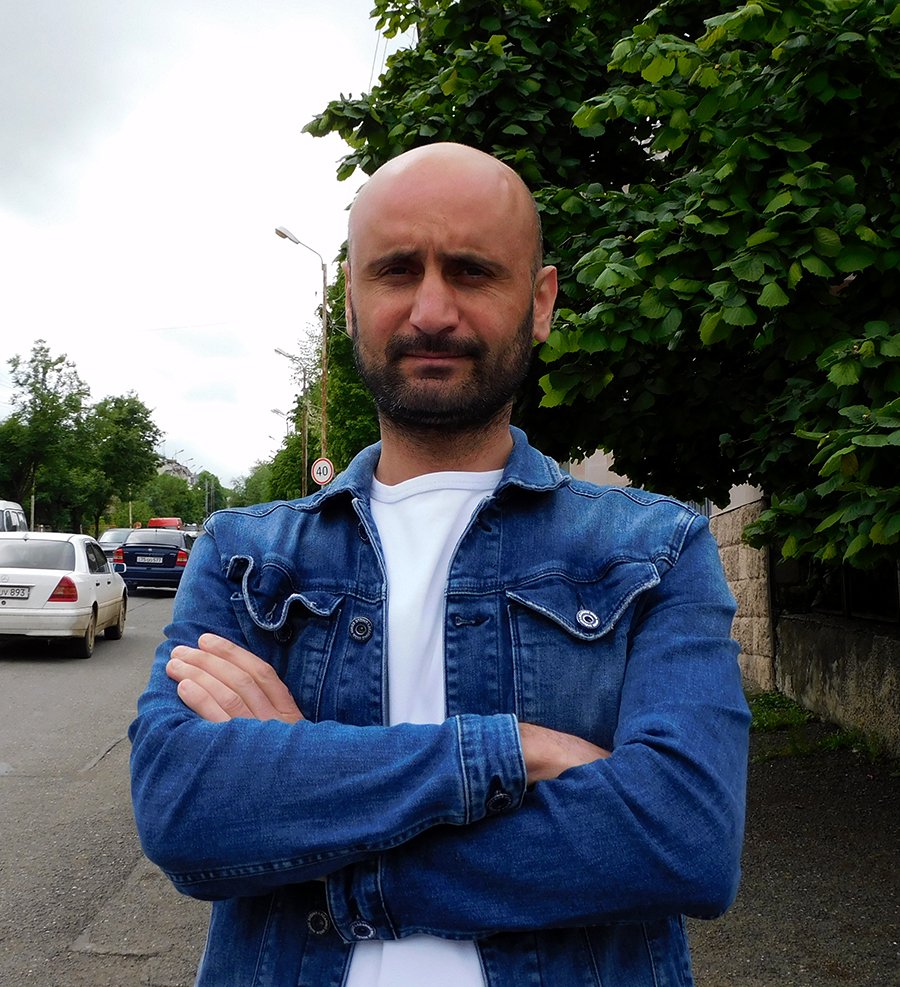
A view from the author’s window.
Stepanakert, the capital of Artsakh, once again celebrated its eponymous day without festivities. Two years ago, the city woke up to strong explosions the morning after these annual celebrations. Still sleepy, residents did not understand what was going on. The screams of women and children running down the stairs to the basement in panic could be heard from the entrance to our five-story Soviet-era building. A cluster bomb had exploded in our yard. Cars were on fire. It was around seven in the morning on September 27, 2020. It is terrible to imagine if the shelling had started two hours later, and the children were already in the yard. A black cat had been lying near the burning cars. Its intestines were laid bare, the fragments crushed and its dark blood spilled on the ground. It was the only living creature outside out at that hour.
A living, bustling city became desolate in one day. For 44 days, the silence was periodically interrupted by air raid sirens, which still blare in our ears.
The wave of the blast shattered windows. The men stood stunned, and one of them uttered, “The war has begun.” The women, for some reason, started sweeping broken glass.

The man was right. The war lasted 44 days. Thousands were killed, tens of thousands of Artsakh citizens were displaced, and hundreds of villages and cities came under the control of Azerbaijan. The reality in Artsakh changed in one morning. Two years later, the city is an open wound. The war has yet to end in Artsakh. Today, we see that it has even been transferred to the sovereign territory of the Republic of Armenia (RA).

It seemed that the entry of Russian peacekeepers would bring peace to the region, at least temporarily for five years, but many concerning events have taken place, which continue to worry all Armenians, especially Armenians living in Artsakh.
December 14, 2020: Azerbaijan occupies the still remaining villages of Hin Tagher and Khtsaberd of the Hadrut region of Artsakh and captures Armenian servicemen.
May 12, 2021: Azerbaijan launches attacks in Gegharkunik (Upper Shorzha) and Syunik (Black Lake, Khoznavar), capturing more than 40 kilometers of RA territory.
August 26, 2021: Azerbaijan demands and receives from Armenia sections of the Goris-Kapan road, paralyzing the Armenia-Iran interstate land connection.
November 16, 2021: Azerbaijan launches an attack in the direction of Ishkhanasar mountain in the Syunik region. The Armenian side had seven victims, ten captured.
March 2022: Azerbaijan attacks in the direction of Parukh village in the Askeran region of Artsakh and captures the nearby strategic Karaglukh heights. Three Armenian soldiers are killed in the battles. The populations of Parukh and Khramort villages are evacuated.
March 2022: Azerbaijan interrupts the gas supply from Armenia to Artsakh twice during an unprecedented, unbearably cold month, creating a humanitarian crisis.
August 1-3, 2022: Azerbaijan launches attacks in the direction of Armenian positions in the western parts of the Martakert region in Artsakh and the Berdzor corridor. Armenia has at least two victims and 19 wounded. Azerbaijan demands the town of Berdzor and the villages of Aghavno and Nerkin Sus and receives them as of September 1.
September 13-14, 2022: Azerbaijan launches the largest offensive since the 2020 war, from Gegharkunik to the Armenian-Iranian border. Azerbaijani forces shell RA cities and villages, occupying at least 10 square kilometers of RA territory. As of September 19, the Armenian side has at least 207 dead and missing.
During this entire period, Azerbaijan’s Armed Forces have regularly shot at the border villages of Artsakh, particularly in the direction of the villages of Taghavard and Karmir Shuka.
Along with non-stop fighting, the socio-psychological situation in Artsakh remains very difficult. The government of Artsakh has only been able to provide housing for 1,200 displaced persons. To this day, people live in hotels, garages and shops, hoping that one day they will receive housing from the government. This issue is considered one of the most urgent in Artsakh. Every day, people are looking for a house for rent in Stepanakert, but there are none.

Grandpa Gurgen lives in a former shop with his 12 family members. “I worked as a builder for 40 years,” he says. “I built two houses in Stepanakert, but during the first Artsakh war, when they were shelled from Shushi, my house was razed to the ground. The product of my whole life’s work became zero in just a minute. We moved to Shushi after it was liberated. Now we have been evacuated and live in this shop with 12 people. The owner of this area says that we have to vacate it on the first of October. We don’t know what we will do. We will end up on the street like dogs. I can’t fight anymore. I can’t build another house. I am too old now. My grandson is a participant in the war. His friend, who is also from Shushi, lost his leg as a result of war and still hasn’t received a house from the government. If an injured person didn’t get a home, we just should stay silent and wait. But for how long? We have relatives in Russia, but we didn’t want to go to them. We want to live here, on our land. It’s hard. I don’t know.”

There are many stories like this in Artsakh. In addition to social problems, there is always fear of war.
“The Republic of Artsakh and the Republic of Armenia both face short-term and long-term security issues, which are the pivotal challenges of the present day,” Artsakh President Arayik Harutyunyan said in his address on September 19, 2022. “We must honestly admit that the Armenian state is standing on the threshold of a new and catastrophic war, which could have no less serious consequences than the 44-day war.”
[RELATED | Remembering and Honoring the Heroes of the 2020 Artsakh War]
Despite this imminent danger, the people of Artsakh continue to be optimistic. We have lived here for one-thousand years, and we will live here for another thousand, people say. There is no better place in the world than here. We just want peace.




Be the first to comment